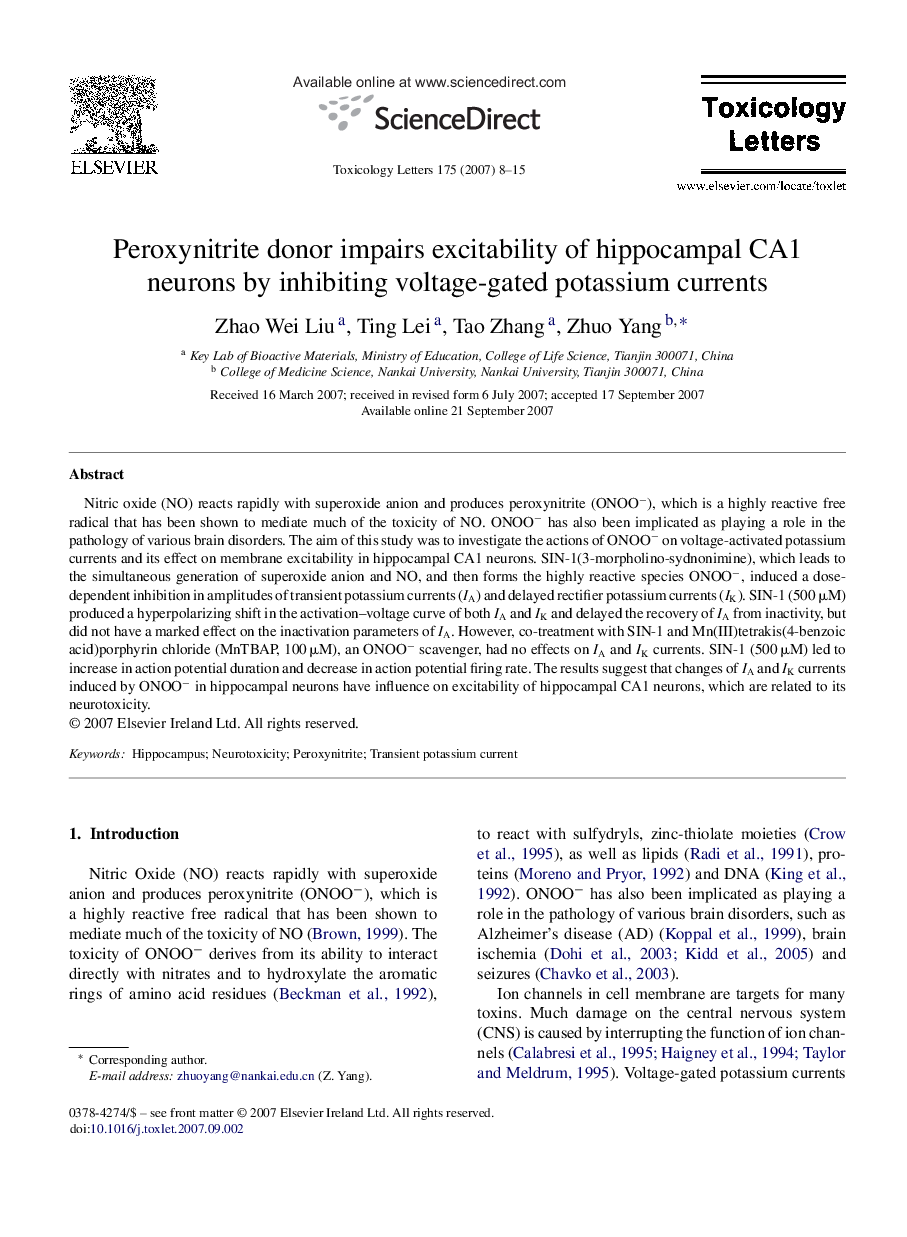| Article ID | Journal | Published Year | Pages | File Type |
|---|---|---|---|---|
| 2601521 | Toxicology Letters | 2007 | 8 Pages |
Nitric oxide (NO) reacts rapidly with superoxide anion and produces peroxynitrite (ONOO−), which is a highly reactive free radical that has been shown to mediate much of the toxicity of NO. ONOO− has also been implicated as playing a role in the pathology of various brain disorders. The aim of this study was to investigate the actions of ONOO− on voltage-activated potassium currents and its effect on membrane excitability in hippocampal CA1 neurons. SIN-1(3-morpholino-sydnonimine), which leads to the simultaneous generation of superoxide anion and NO, and then forms the highly reactive species ONOO−, induced a dose-dependent inhibition in amplitudes of transient potassium currents (IA) and delayed rectifier potassium currents (IK). SIN-1 (500 μM) produced a hyperpolarizing shift in the activation–voltage curve of both IA and IK and delayed the recovery of IA from inactivity, but did not have a marked effect on the inactivation parameters of IA. However, co-treatment with SIN-1 and Mn(III)tetrakis(4-benzoic acid)porphyrin chloride (MnTBAP, 100 μM), an ONOO− scavenger, had no effects on IA and IK currents. SIN-1 (500 μM) led to increase in action potential duration and decrease in action potential firing rate. The results suggest that changes of IA and IK currents induced by ONOO− in hippocampal neurons have influence on excitability of hippocampal CA1 neurons, which are related to its neurotoxicity.
